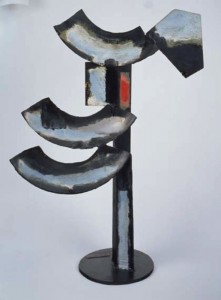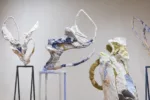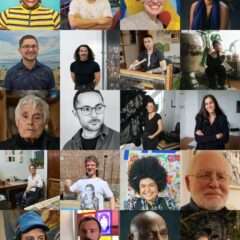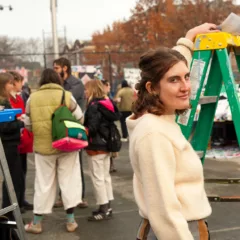I was in D.C. once again for Arts Advocacy Day and, unfortunately for those of us in the arts business, it was the least pressing issue on the hill. I saw some very good exhibitions during my time there, however. In the tower of the National Gallery of Art‘s East Building, is a small exhibition of Nam June Paik’s work – and it should be smaller still, because One Candle, Candle Projection (1988–2000) is worth the ascent all by itself, even if the climb has to be done entirely by foot (although there is an elevator; a very slow one).
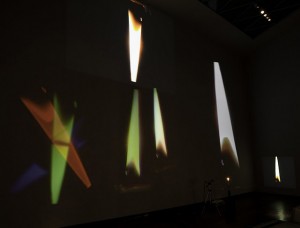
One Candle, Candle Projection is a great piece that summarizes the contemplative aspect of Paik’s work. The Tower Gallery has been darkened, and because of its proportions – a sort of torqued cube – it has the feel of a chapel. A single, lit candle, it’s flame flickering, burns before a video camera which projects it’s enlarged and refracted image across three walls of the room, in real time. I felt as though I was in a memorial for the artist, with whom I worked on a project years ago, and for two other friends deeply involved with art. It didn’t evoke sadness, just gratitude, for having known them and for all they helped me to see and understand. One Candle reflects Nam June’s serious playfulness, asking us what we are looking at when we watch images on video and what relationship they bear to their subjects, chiding us for expecting lots of action on the small screen, and demonstraing that sometimes, very little is enough. The piece is about time, so inevitably about death, and illusion, circularity and repetition (a new candle is lit by gallery staff daily). This is a work that cannot be captured with words; it must be experienced. You’ll have the opportunity through October 2.
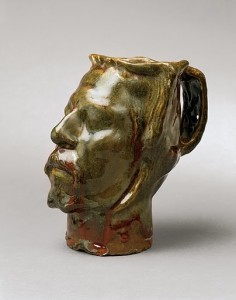
Gauguin, Maker of Myth, (through June 5th; it was organized by Tate, where it was much larger) is also at the National Gallery of Art; it looks at the artist through the lens of his exaggerations, storytelling, fables and myths. It begins with his self-fashioning as Paul Gauguin, artist and social outsider, a natural savage of indigenous, Peruvian descent, who traveled to find traces of the last, unspoiled communities on Earth. In fact he had lead a thoroughly bourgeois life, supporting his wife and family as a stockbroker. His Peruvian ancestors had been Spanish colonials, and when visiting Tahiti and the Marquesas, he found societies significantly affected by Europeans over more than a century of global trading.
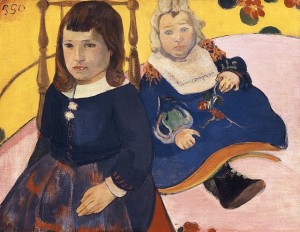
While not attempting to be a retrospective, the exhibition includes Gauguin’s work done throughout his career and in all genres: portraiture, still life, landscape, history painting (in the form of religious narratives) and genre scenes. What will be most significant, for viewers not thoroughly familiar with Gauguin’s work, are the large number of prints and sculptures (in ceramic and wood, including a stunning ceramic self-portrait in the form of a severed head, above, and the carved door-surround of his house in the Marquesas); they parallel the subjects of his paintings and were even more radical. If the National Gallery of Art, which has lent a significant portion of the work on view, returns the sculpture to the tucked-away, first-floor galleries and the paintings to the galleries upstairs, it will be throwing away the chance to show the artist at his most complex and interesting. There are absolutely wonderful works on view, including significant loans from obscure collections (in Newcastle upon Tyne, Vaulaines-sur-Seine, Frederikssund and Okayama, among others). The exhibition will reward all visitors, regardless of their prior knowledge of Gauguin’s work.
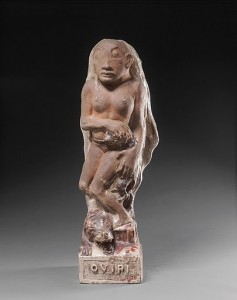
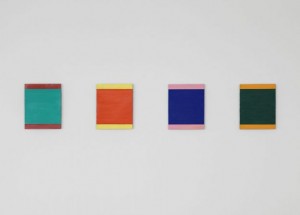
The Hirshhorn Museum and Sculpture Garden is showing the stunning and important Blinky Palermo: Retrospective 1964-1977 through May 15. The exhibition was organized by Lynne Cooke for the Dia Foundation, and will be shown at Dia in Beacon and the Center for Curatorial Studies at Bard College from June 25–Oct. 31. Palermo’s work has been hardly visible in the U.S. (other than at Dia), so it’s important to catch it at one venue or the other. The work has been published widely, but it does not lend itself to reproduction. He was a student of Beuys, and spent several years of his very brief career in New York, so he interacted with artists on both sides of the Atlantic. Criticism of the work has been divided, with American scholars tending to see it as early conceptualism, and Europeans finding an attempt to re-habilitate painting as a significant art form. The work is responsive to both views, but artists are likely to respond to his experimental methods, which look remarkably current. They include multi-part canvases which are dyed, rather than painted; small paintings which are positioned primarily to activate the space around them; wall drawings designed for specific locations; wooden forms colored by wrapping tape around them, rather than painting them (see below); the flat, colored forms displayed leaning against a wall, where they are not quite paintings and not quite sculpture; and reliefs of canvas stretched over irregularly-shaped stretchers which display distinctly crude craftsmanship (intentional, I assume).
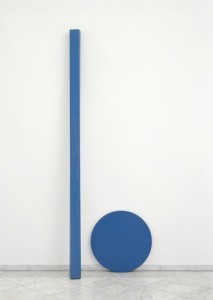
I stopped in to see the Renwick Craft Invitational, this year subtitled History in the Making, because two of the four exhibited artists are Philadelphians. The gallery of Judith Schaecter’s work includes an excellent selection of important pieces produced over the last twenty years. I will always find it a mystery that she creates scenes of emotional intensity and short duration in a medium primarily associated with churches (which are presumably intended to last forever). The big surprise of the exhibition was a furniture-maker, Matthias Pilessnig, whose work I had not known. He constructs seating in bent wood, but about as far from Thonet as possible. His swelling and flowing forms are constructed out of cage or basket-like structures. The major problem for me was that the work was obviously intended to be used (the one exception being a Thonet chair which Pilessnig has roughly bound with ribbons of white oak), and I wasn’t allowed to sit. Pilessnig’s seating is not furniture for the eye, and I very much wanted to test his seductive, organic forms with my entire body.
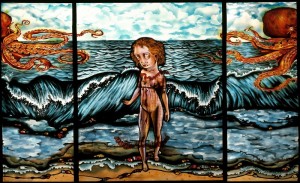
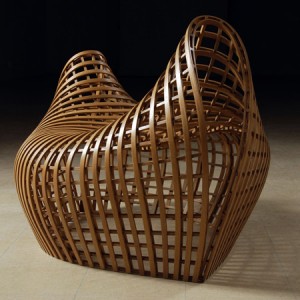
The Phillips Collection is showing two intimate exhibitions of work by important, mid-twentieth century American artists, both on view through May 15; they offer better understanding of the artists’ work than the usual, huge surveys because their size encourages lingering with the works. Philip Guston, Roma is the first public exhibition of 39 small paintings from the trip to Italy that the artist made in 1970-71, after the very bad public response to his return to figuration in a cartoon-like style. The palatte and forms will be familiar to those who know Guston’s late work, but the great surprise is to find that a disembodied foot, so similar to the many shoes in Guston’s cartoon paintings, is derived from the fragment of the Colossus of Constantine in the courtyard of the Senator’s Palace in Rome; the same foot inspired one of my favorite images about artistic influence (the Fussli below). Other lumpy forms derive from trees and fountains in formal Italian gardens. It is fascinating and unexpected to learn that a trip to Italy, a standard part of an academic artist’s education, made such an impression on a former abstract expressionist.
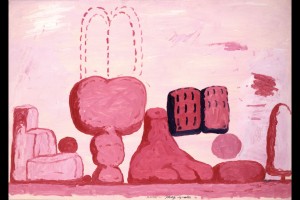
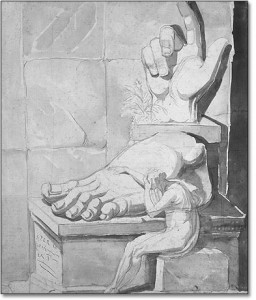
David Smith Invents includes 40 sculptures, paintings, drawings, and vintage photographs by the artist of his work installed at Bolton Landing; all were done from the early 50s-60s, a significant moment in Smith’s development. It grounds Smith in his training as a painter; I never conceived of myself as anything other than a painter, he said. The large paintings, done with aerosol paints and stencils, are shown infrequently; some are extremely elongated verticals, with dimensions closer to totemic sculpture than to conventional paintings. The exhibition includes polychrome, painted sculpture and at least one work, Tanktotem IV (1963), where Smith manipulated the color of the patinating chemicals as if drawing with ink. I’ve never seen anything quite like it.
